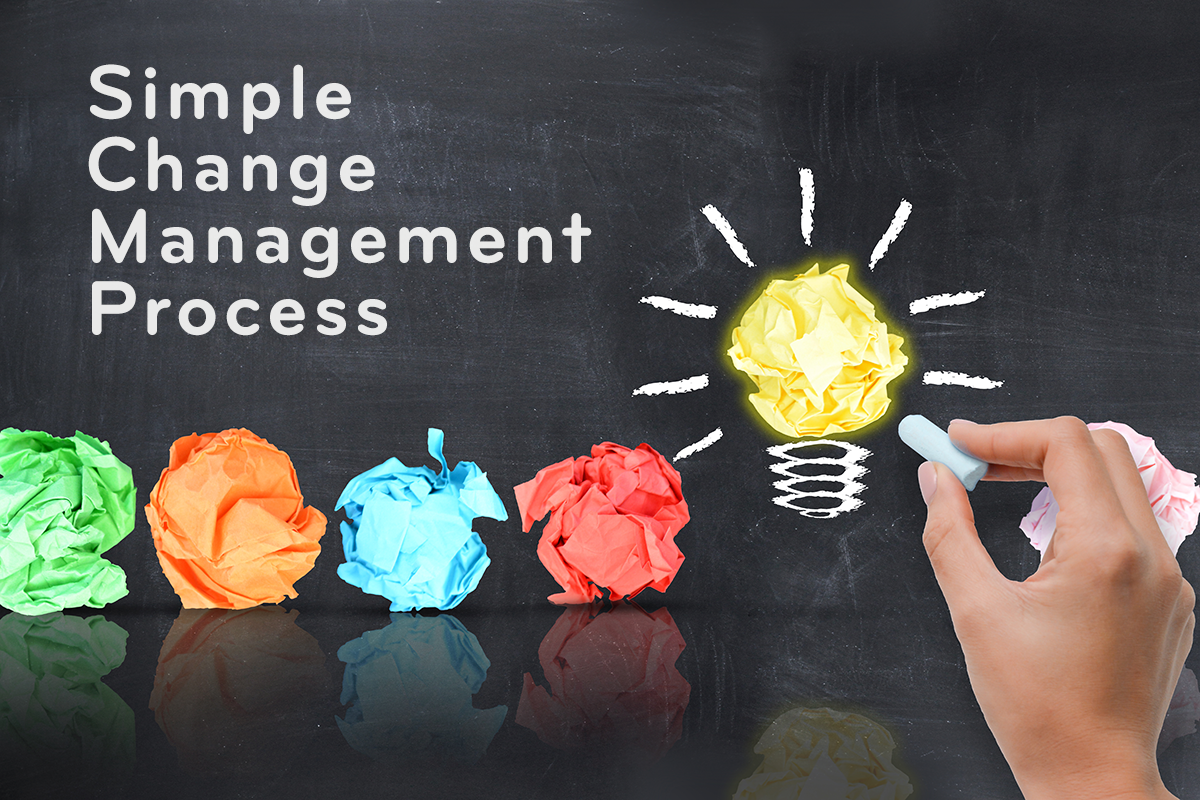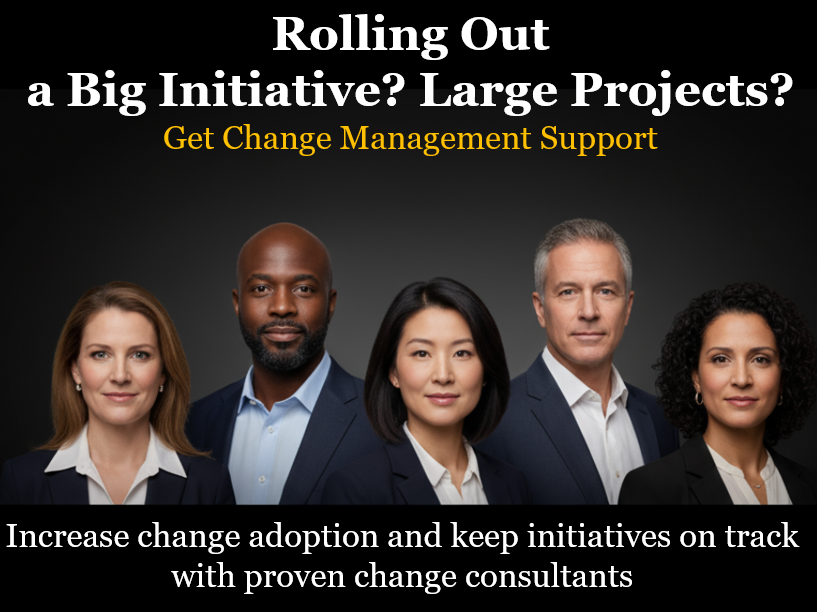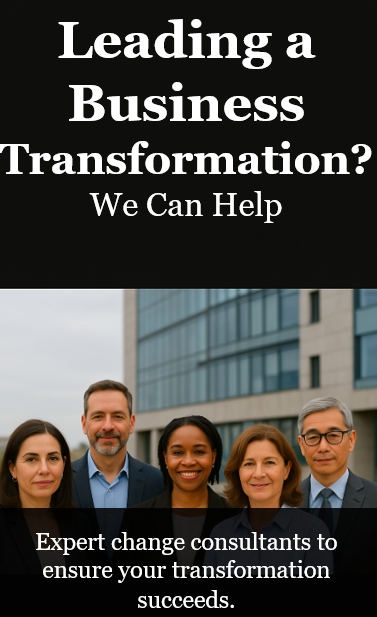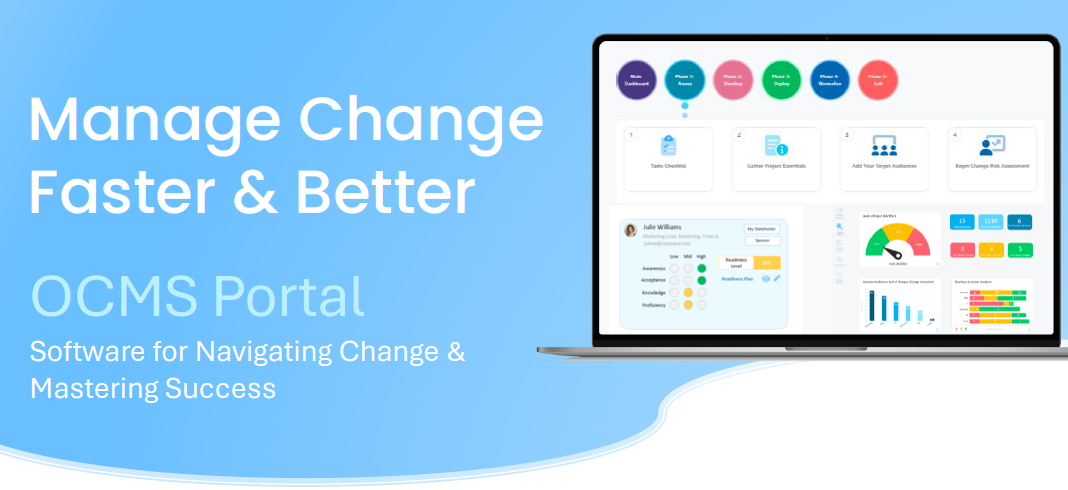Change Management How-To: An Easy Guide for Beginners
Let’s face it, change can feel like a whirlwind to employees. New software, a company restructuring, even a shift in office policy – it can throw everyone off balance. But what if there was a way to navigate change smoothly, like steering a kayak down a calm river instead of riding a rollercoaster?
There is, it’s called organizational change management (OCM). The change management process helps everyone adjust and even embrace change. But here’s the thing: companies often get bogged down in the complexities of change management, unsure of where to begin.
This can lead to a piecemeal approach – throwing out random trainings or announcements – that doesn’t actually help employees adapt or achieve the desired business goals.

In this post, we’ll break down the basic change management process flow into bite-sized pieces, making it easy for anyone to understand and implement. You’ll get a comprehensive change management how-to that will not only make change manageable but also an opportunity for growth and innovation.
Watch a summary below:
Story Highlights
|
Why is Change Management Important?
Imagine launching a new customer relationship management (CRM) system in your company. While the software might boast impressive features, without good change management practices, employees might struggle to adopt it.
This can lead to frustration, wasted resources, and ultimately, a failed initiative. Change management helps you avoid this scenario. Here’s why it’s crucial:
- Increases User Adoption: Effective change management fosters understanding and encourages employees to embrace the change, leading to higher adoption rates for new technologies or processes.
- Reduces Resistance: By addressing concerns and providing support, the change management process helps minimize resistance and create a smoother transition for everyone involved.
- Improves Communication: The OCM process emphasizes clear and consistent communication, ensuring everyone receives crucial information and feels involved.
- Minimizes Disruption: basic change management principles can help mitigate potential disruptions to workflow and productivity during the transition period.
- Boosts Employee Engagement: A well-managed change fosters a sense of ownership and engagement among employees, as they feel valued and included in the process.
Are you leading or responsible for a mid-to-large project implementation? We can help. Learn more about how Airiodion Group can help you and your organization: Top Rated Change Management Consultants.
Learn more about how Airiodion Group can help you and your organization: Top Rated Change Management Consultants.
Do you have any questions about basic change management principles or the OCMS Framework change management process flow? Please reach out and let us know.
The Simple Change Management Process: 5 Key Phases
The OCMS change management framework provides a clear and actionable structure for managing change. It follows a logical project progression that aligns well with project management process flows.
We’ll break down its good change management practices into a simple guide that even beginners can understand and adopt. Here’s a breakdown of its five-phase change management process flow.
1. Assess: Understanding Your Landscape
The first step is thorough assessment. This involves the following:
- Identify the Project Goals: What problem is the initiative trying to solve? Is it improving efficiency, enhancing customer service, or adapting to a new regulation? Clearly define the rationale behind the change, along with the current and future states.
- Identify the Target Audience: Who will be impacted by the change? This could include employees across different departments, managers, executives, and even external partners.
- Assess the Impact Level: Evaluate the current and future state for each impacted group. Groups with higher impacts will need more communications, training, etc.
- Evaluate Key Stakeholders & Readiness: Assess key stakeholders for receptiveness and influence. Assess the organization’s overall readiness for change. Leverage surveys to save time. If training is indicated, assess training needs.
2. Develop: Crafting Your Change Strategy
Once you have a comprehensive understanding of your landscape, it’s time to develop your change strategy. This includes:
- Develop a Strategy Playbook: Define clear, measurable goals for the change initiative. How will you determine whether the change has been successful? What types of engagement and support will help reach those goals?
- Develop a Communication Plan: Craft a communication plan that outlines how you will inform stakeholders about the change. Consider the specific needs of each group and utilize multiple channels like meetings, email updates, and internal communication platforms.
- Create Training Programs: Develop training programs to equip employees with the knowledge and skills they need to navigate the change.
- Build Support Systems: Establish support systems like help desks, knowledge bases, or peer mentoring programs (aka Change Champions Network) to address questions and concerns as employees navigate the change.
- Complete OCM Plan: Incorporate the items above into an overall simple change management plan. This will be your team’s roadmap to providing OCM support for the initiative.
3. Deploy: Putting Your Plan into Action
Now it’s time to deploy your change plan and initiate the transition. Here’s how:
- Rollout Strategy: Develop a phased rollout strategy if the change impacts a large group of people. Starting with a pilot program allows you to refine your approach before a wider implementation.
- Communication and Transparency: Throughout the rollout, maintain open and transparent communication with stakeholders. Address concerns proactively and be prepared to adjust your approach as needed.
- Change Management Activities: Implement various change management activities like training sessions, town halls, or internal campaigns to keep employees informed and motivated.
- Monitor Progress: Continuously monitor progress towards your defined goals. Utilize feedback mechanisms like surveys or focus groups to gauge employee sentiment, and track metrics in a change management tool.
4. Normalize: Embedding Change in Your Culture
Don’t let the momentum fade after the initial rollout. The fourth stage, Normalize, focuses on solidifying the change and integrating it into your organization’s culture:
- Reinforcement Strategies: Implement strategies to encourage employees to sustain the new behaviors associated with the change. This could include recognition programs for exemplary behavior, ongoing training opportunities, or leader visibility demonstrating the desired behaviors.
- Communication and Feedback Loops: Maintain open communication channels throughout the normalization stage. Encourage employee feedback and use it to refine your training materials or address emerging challenges.
- Performance Management Integration: Integrate the desired behaviors and outcomes of the change initiative into performance management systems. This establishes a clear link between adopting the change and employee success.
5. Exit: Evaluating and Learning
The final stage, Exit, doesn’t necessarily signify the end of the change initiative. It’s an opportunity to evaluate the process, identify learnings, and prepare for future changes. Key activities include:
- Final Evaluation: Assess the success of the change initiative against the defined goals. Analyze metrics, conduct surveys, and gather feedback from stakeholders.
- Lessons Learned: Document the key learnings and challenges encountered during the change process. This knowledge base is invaluable for informing future change initiatives.
- Celebrating Success: Recognize and celebrate the achievements of those involved in the change initiative. This fosters a culture of continuous improvement and motivates employees for future endeavors.
Remember: This change management how-to is a simplified guide. The specific steps and level of complexity will vary depending on the nature and scope of your change initiative. You can find a more in-depth change management process flow here.
Please let us know if you have any questions or feedback about this change management how to process. We’d love to hear from you!
Additional Change Management How-To Tips for Beginners
When you first look at a basic change management process, it’s easy to get overwhelmed. This is true with any new process or system until you learn it and start using it. Then, it becomes second nature!
New to OCM altogether? Here are some additional change management for beginners tips:
- Start Small: For larger, more complex changes, consider piloting the initiative with a smaller group first. This allows you to refine your approach before a wider rollout.
- Seek Support: Don’t be afraid to seek guidance from experienced change management professionals or consultants who can provide tailored advice for your specific needs.
- Focus on People: Change management is ultimately about people. Empathy and clear communication are essential for a smooth transition.
- Begin with the Basics: Get your feet wet first with basic change management principles, such as the change impact assessment, stakeholder assessment, and communications plan. You can branch out to more tools as you learn.
Would you like to get more tips on change management for beginners that go beyond this simple change management process? Sign up for our monthly newsletter!
Conclusion: Simple Change Management How-To
Learning good change management practices is not a one-time event; it’s an ongoing journey. By starting with this simple and practical change management process, you can navigate organizational transformations effectively.
As you and your organization become adept at the simple change management policy, you can then begin to explore more complex nuances of the change management process flow. This will expand your capabilities for enabling change and empower your organization to embrace change as an opportunity for growth and success.
Software Built on Good Change Management Practices
Are you ready to improve the way you manage change? Whether you’re just starting out or you’re a seasoned pro, our change management software is here to streamline your process.
With time-saving automation and a simple, repeatable framework, it’s designed to make your life easier and empower your organization.
So why wait? Let’s make change work for you, not against you.
Sign up for a free trial of OCMS Portal now.
FAQ: Change Management How-To
Why is using good change management practices important?
Without a good change management process flow to help employees adopt changes driven by an initiative, employees might struggle and fail to transition successfully. They fail to adopt the changes, and the project falls short of expectations.
What’s the best framework in change management for beginners?
If you’re new to change management, then the OCMS simple change management process is one of the best to use. It breaks down change management for beginners into 5 comprehensive phases and uses a “manage by deliverables” approach that makes sense to new and seasoned change managers alike.
What are the five phases of the OCMS basic change management process?
The OCMS Framework is a great change management how to that walks you step by step through a simple, straightforward process. Its five phases all align with the actions that you perform in this simple change management plan. They are: Assess, Develop, Deploy, Normalize, and Exit.
Do you need change management consulting support or help?
Contact Airiodion Group, a specialist change management consultancy that supports organizations, project managers, program leads, transformation leaders, CIOs, COOs, and more, who are navigating complex transformation initiatives. For general questions, contact the OCM Solution team. All content on ocmsolution.com is protected by copyright.
External Sources: stock.adobe.com




